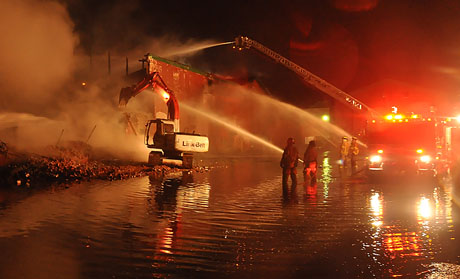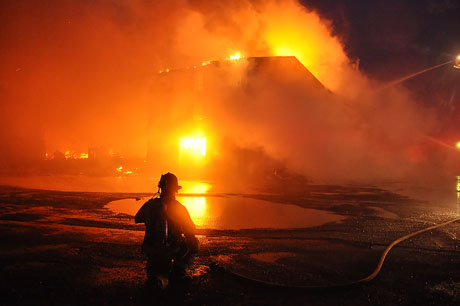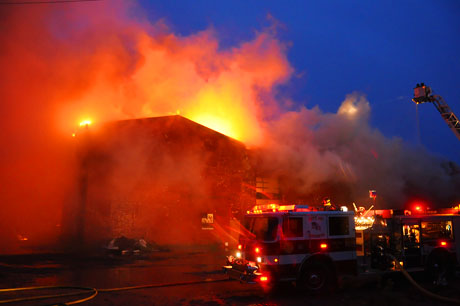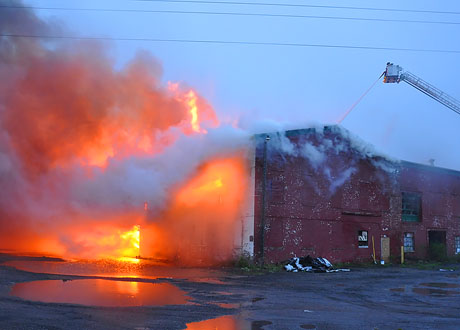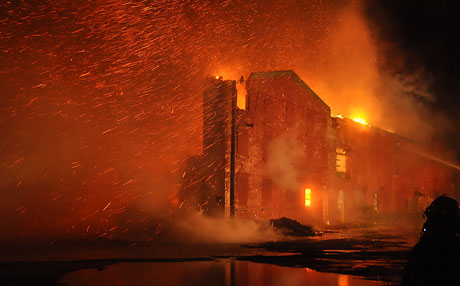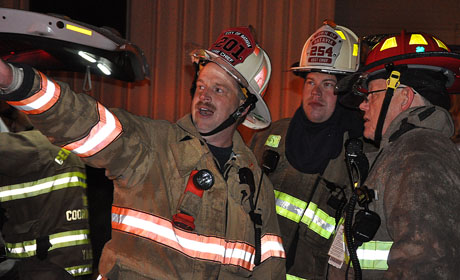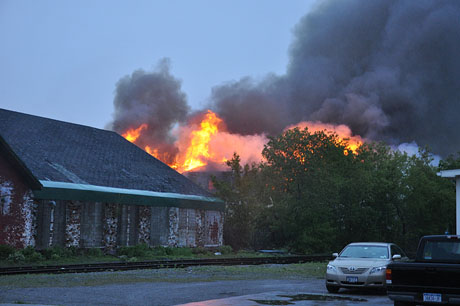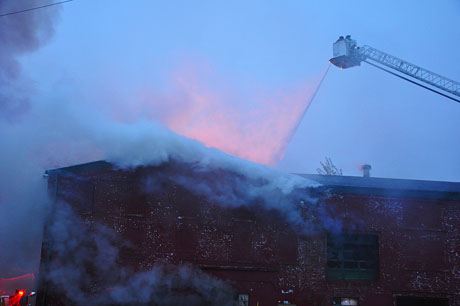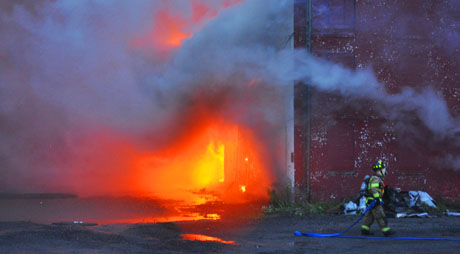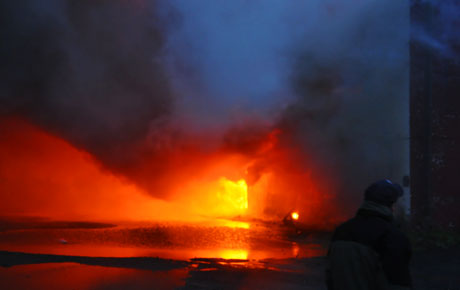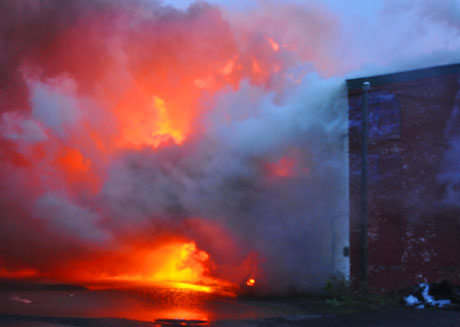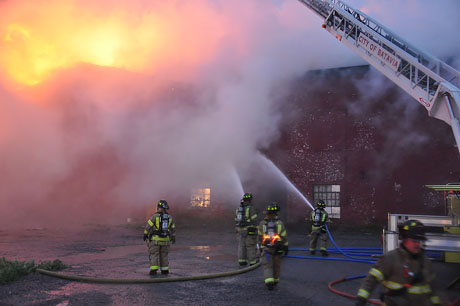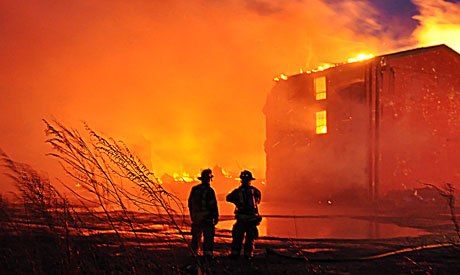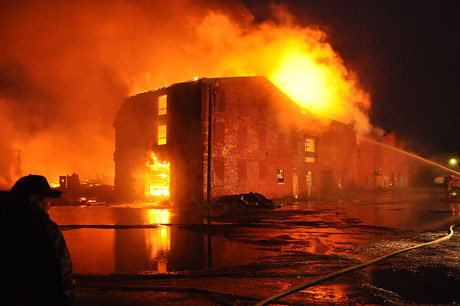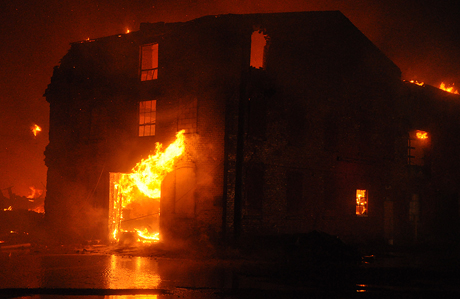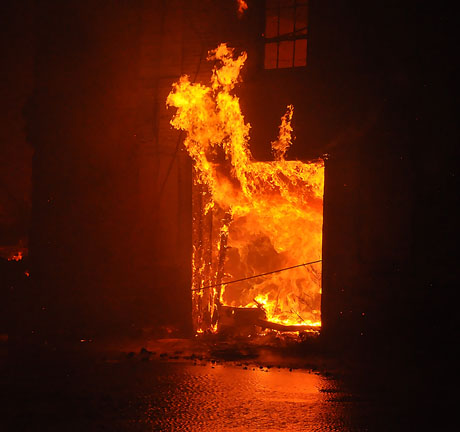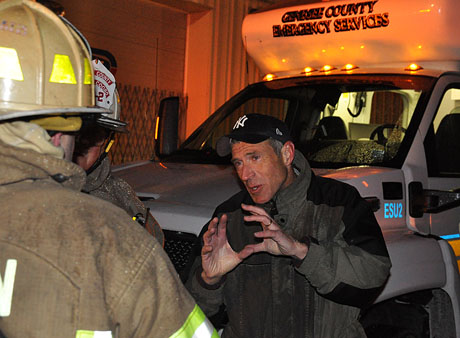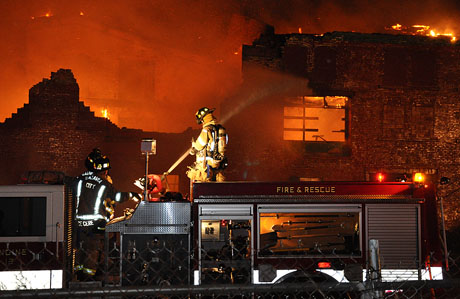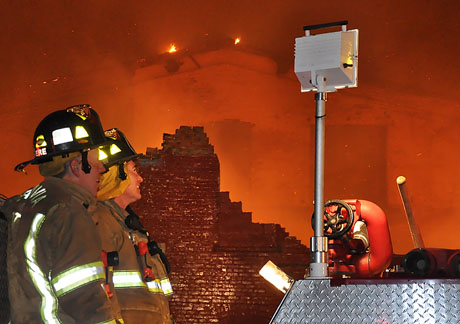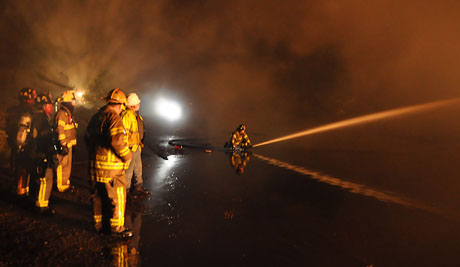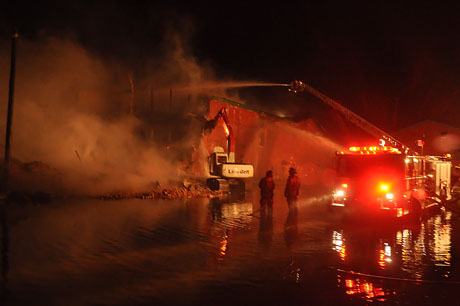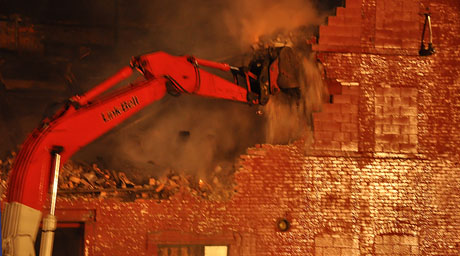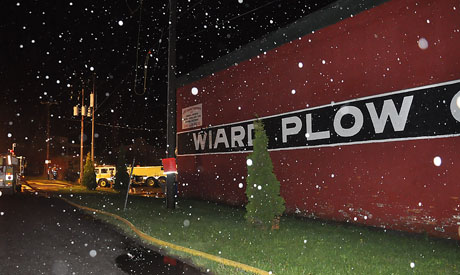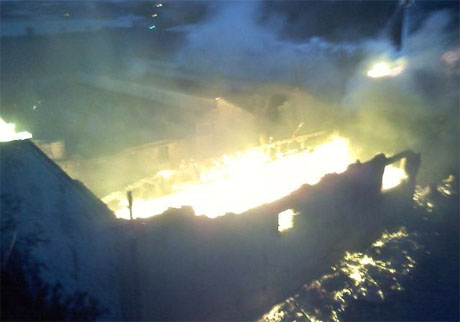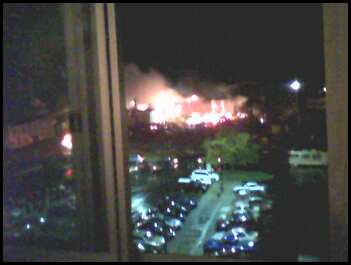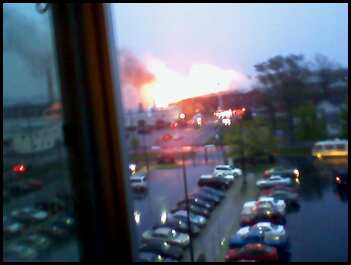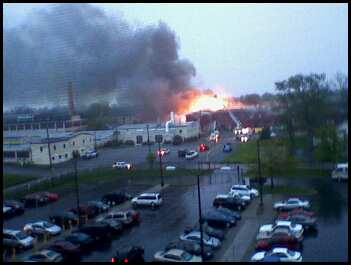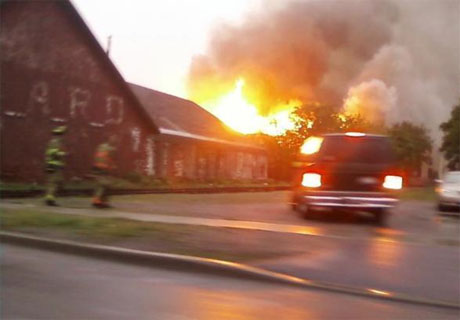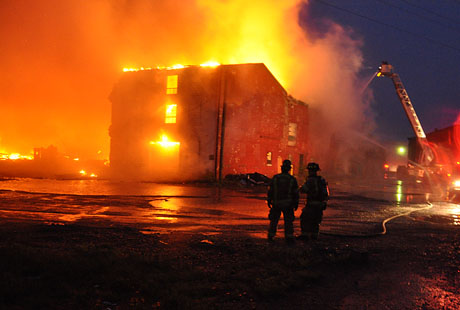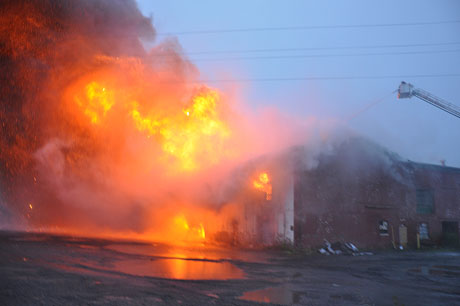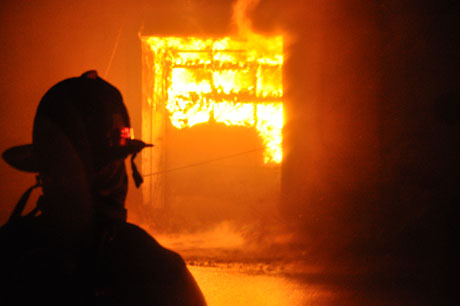Photos reveal gaps in Scott Doll murder investigation
Steve Mullen was the only witness called to testify in the Scott Doll murder case on Friday. He has been employed by the Genesee County Sheriff's Office for 18 years and is a sergeant in charge of the Criminal Investigation Unit.
He told the jury he got a call from Sheriff's Investigator Kris Kautz early Feb. 17, 2009 about a body found at 683 Knapp Road in Pembroke. He drove to the scene in a marked cruiser and pulled in behind Deputy Howard Carlson. Carlson's vehicle had the headlights on and they illuminated a body lying the the driveway.
With his flashlight, Mullen observed a large pool of blood around the victim, Joseph Benaquist, and damage to his skull. The body had frozen over and there was frost on his eyebrows.
The body was lying between two vehicles. Mullen requested an ambulance, as a matter of protocol, and cordoned off the area with yellow crime scene tape. A unit from the City of Batavia confirmed the death and Sheriff Deputy Chief Jerome Brewster went to the scene, calling two others to assist, Investigator Timothy J. Weis and Deputy John R. Duyssen.
"We did as thorough a search as we could in the dark," Mullen said, adding that he and Carlson checked vehicles and ran the plates through the database, looked in the house and around the property.
Mullen said he spent hours there and didn't leave until well after sunrise.
He noticed the rear tire on a Pontiac G6, which had a temporary registration, was flat. It was towed to the Sheriff's department for forensic processing, along with a Chevy Malibu.
Later that day, Mullen met Weis on Route 490 in the Town of Gates to give him some items secured as evidence to take to the public crime lab. The items included the bloody overalls, sneakers, work gloves and fireman's head sock.
On Feb. 20, investigators got a search warrant and went to Scott Doll's house at 31 E. Main St. in Corfu.
It is at this point in the testimony that tedious points of vehicle documentation ensued. At District Attorney Lawrence Friedman's prompting, Mullen said he was very familiar with car registries, paperwork and the car business because his father had a small dealership when he was growing up.
The officers found papers from Doll's and Benaquist's car business, but no book of registry. They did find two so-called MV 50 books, issued by the state, which show all the data needed to take to the DMV to transfer plates. All dealerships keep two such books, Mullen said, so one is always at hand when the other is sent to the state temporarily as required.
Friedman asked if Mullen found the paperwork showing a 2007 van belonged to Benaquist. No, Mullen said, nothing in the book matched up with the vehicle's sticker that was missing. The paperwork for an '03 Chevy TRZ was partially filled out and signed by Scott Doll.
The jurors at this point became fidgety. They yawned, blinked, adjusted their necks, rearranged their arms.
Two jurors seemed unable to give the proceedings their undivided attention.
One juror kept his eyes closed for looongg periods of time. He sat in a completely ridged, frozen-like state throughout the court session, with only is jaw moving from time to time as he chewed gum. Once in a while, his eyes actually opened.
The other guy with a questionable attention span nodded off many times during the morning. There was no court in the afternoon. His head would bob downward, stay there awhile, then he would suddenly awaken, subtly surprising himself. His head would raise up, but not for long.
When the jury took a 20-minute break a couple of people in the gallery quipped "hey, maybe he should take some No-Doze," and words to that effect.
On cross examination, Doll's attorney Paul Cambria asked if Mullen took photos during the search. No, Mullen said. Did anyone else take photos? No, Mullen replied, not that he knew of.
Cambria asked if he searched the house? Yes, Mullen said, but because they were supposed to be looking for areas where a person might be, they did not open drawers and inspect nooks and crannies.
They checked the closets and looked for Scott Doll's shoes. Did they check to see if any other man's shoes were there, Cambria asked. No, Mullen said.
Cambria said that while Mullen knew that the Pontiac G6 had a temporary registration, he didn't know the circumstances of that, did he? No, Mullen said, only what should and should not be in the book.
"But you didn't know what the deal was among the parties?"
No, Mullen said.
At Benaquist's house, did anyone photograph shoes there? Cambria asked. No, Mullen said.
Under further questioning by Cambria, Mullen said he searched around the body and found no weapons. He took part in the initial search, but not subsequent ones. He filed the murder charge against Doll sometime after 9 a.m. on Feb. 17, but Doll still had not been given access to legal counsel. No blood analysis was done, no blood-spatter expert consulted and no DNA analysis had been done.
Although Mullen was at the murder scene for up to nine hours, he didn't gather any evidence. Rather, he oversaw and assisted the evidence-collection process. Investigator Weis gathered the physical evidence and took photos. But when Weis took evidence to the crime lab, Investigator Roger M. Stone filled in as photographer. Carlson kept the case investigation log.
There were some things at the scene which apparently escaped Mullen's attention, according to his testimony after being shown a number of photos. There was a boot in the snow, later removed, that he hadn't noticed. There was a pickup truck, photographed from the back, which Mullen said he hadn't seen before.
"It's a little unusual because it had folding chairs in the back of it," Cambria said.
And although Mullen confirmed that the photos presented into evidence where "fair and accurate," he couldn't remember what vehicles were in the driveway and where they were located.
One photo showed Benaquist's hands, each encased in plastic bags to retain DNA evidence, such as skin under the fingernails, hair, etc. This is routine procedure. But forensic testing of his hands was not requested and therefore not done.
Near one of the vehicles in the driveway lies a "big, big flashlight," clearly seen in a photo. Mullen didn't recall seeing it. Cambria asked if anyone had tested it, to see how long it took a charge before it went dead. No, was the answer.
Another photo shows a car jack under the Nissan, another detail Mullen could not recall. And the Nissan, in addition to being processed for evidence at the Sheriff's station, was then taken to the State Police for additional evidence gathering, which Mullen had not been aware of until being shown a photo.
A chunk of wood in front of a tire can be seen in one photo. In another shot, it is gone and there is no evidence marker in its place. Mullen said he believes that it was photographed and marked as evidence, then removed, but he could not be sure.
Courtroom sketches by Robert Garland. Top sketch of Sgt. Steve Mullen on the stand. Inset, Judge Robert Noonan. Bottom sketch, Daniel Killelea, Scott Doll and Paul Cambria.


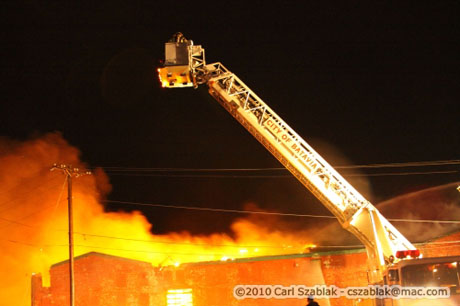
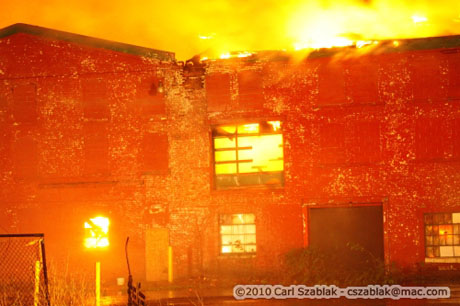
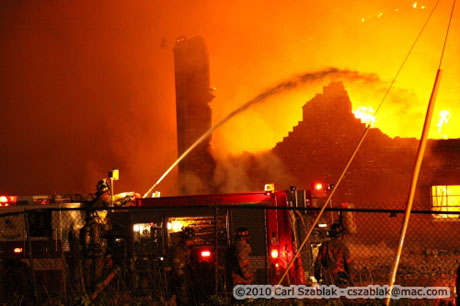
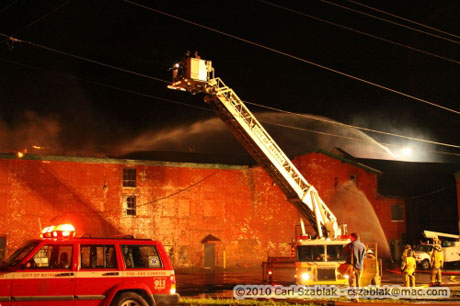












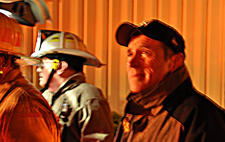 "You can always build another 100,000-square-foot building," Mancuso said at one point. "You can never replace a 100-year-old building."
"You can always build another 100,000-square-foot building," Mancuso said at one point. "You can never replace a 100-year-old building."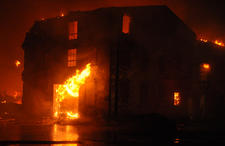 Two youths reported the fire, saying they were walking in the area when they spotted the smoke. Lt. James Steinbrenner said Batavia Police questioned the youths who reported the fire and determined they were in fact just witnesses and not involved in the possible arson.
Two youths reported the fire, saying they were walking in the area when they spotted the smoke. Lt. James Steinbrenner said Batavia Police questioned the youths who reported the fire and determined they were in fact just witnesses and not involved in the possible arson.